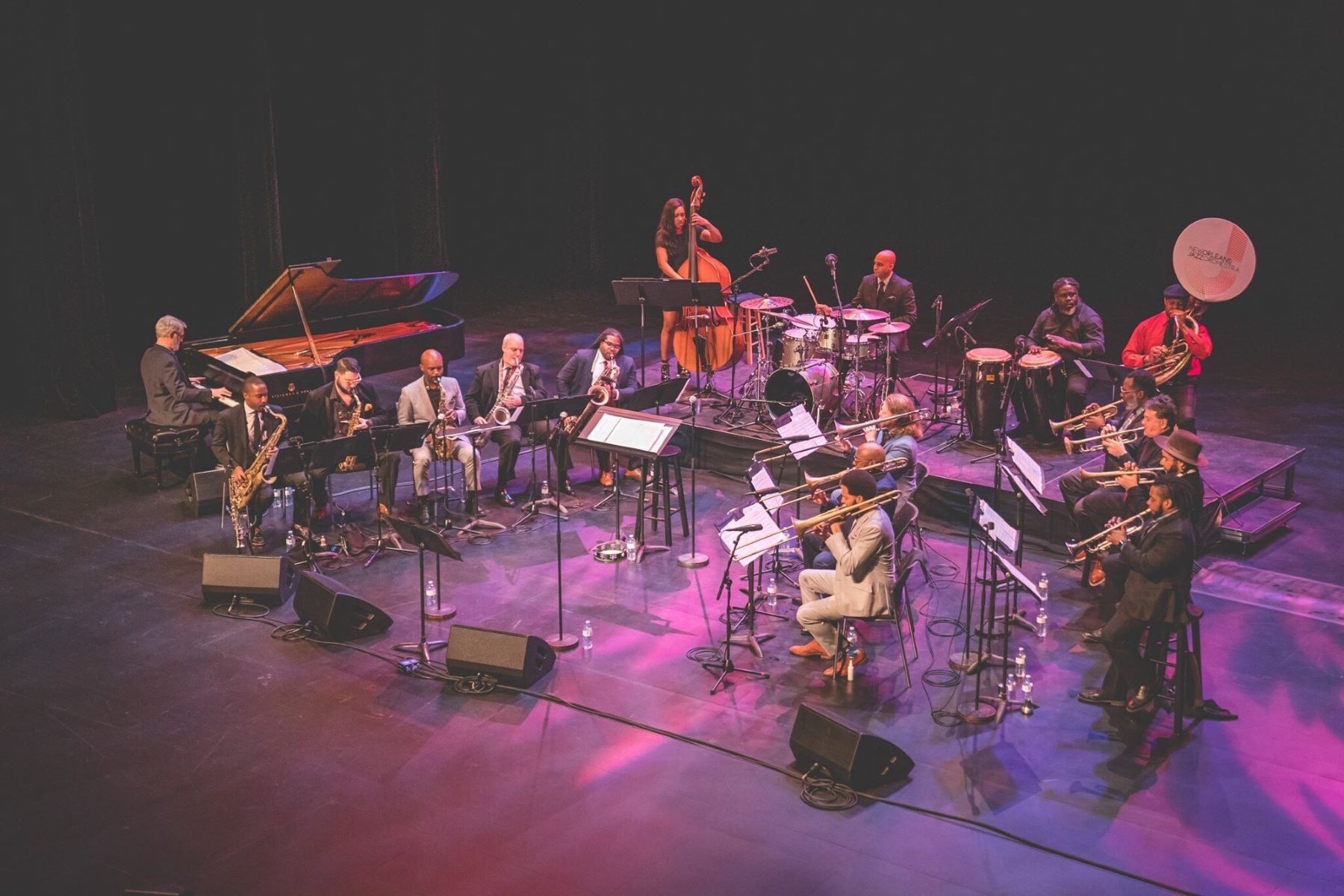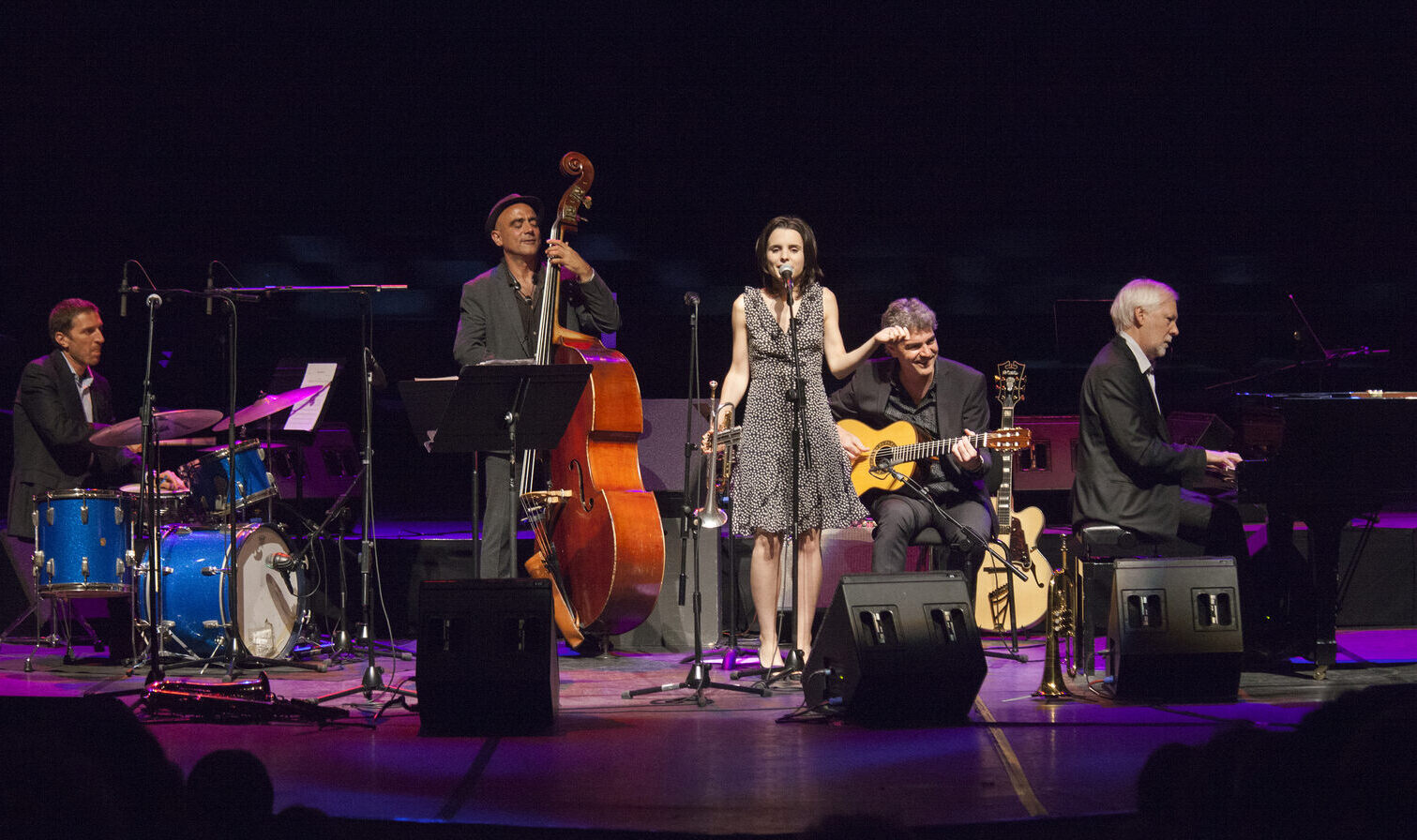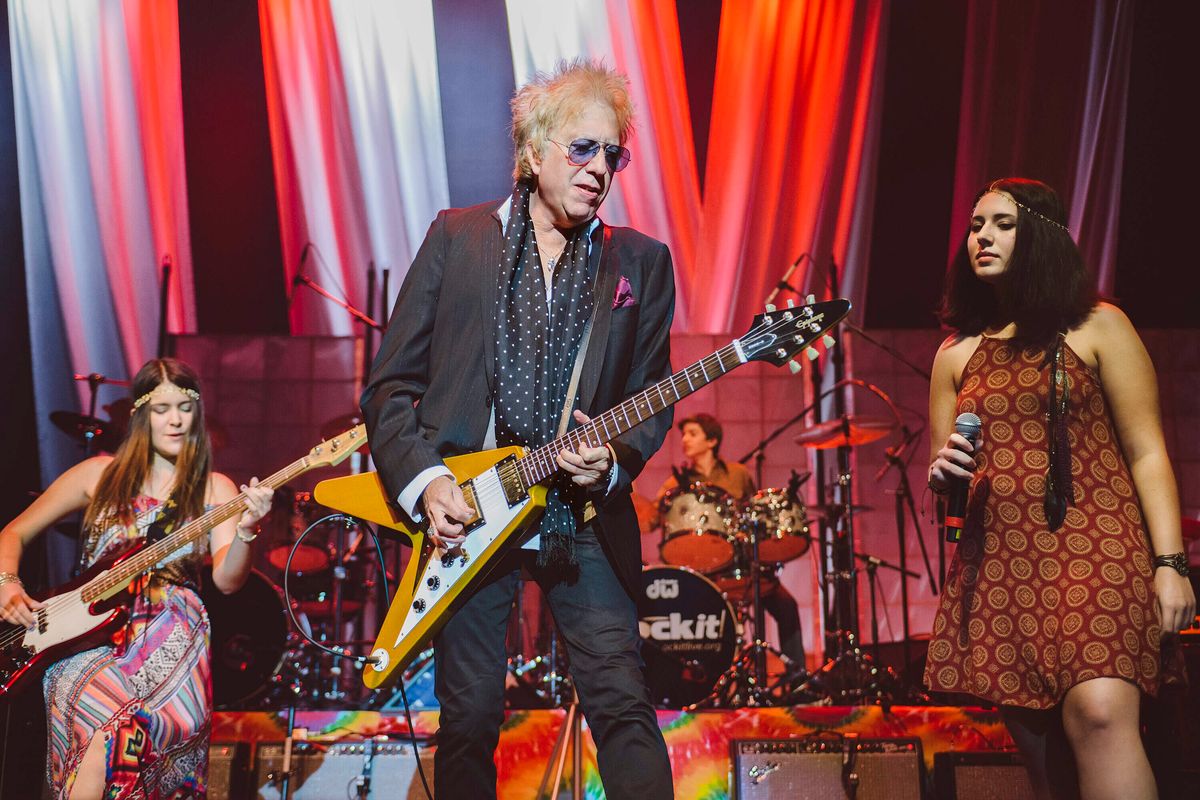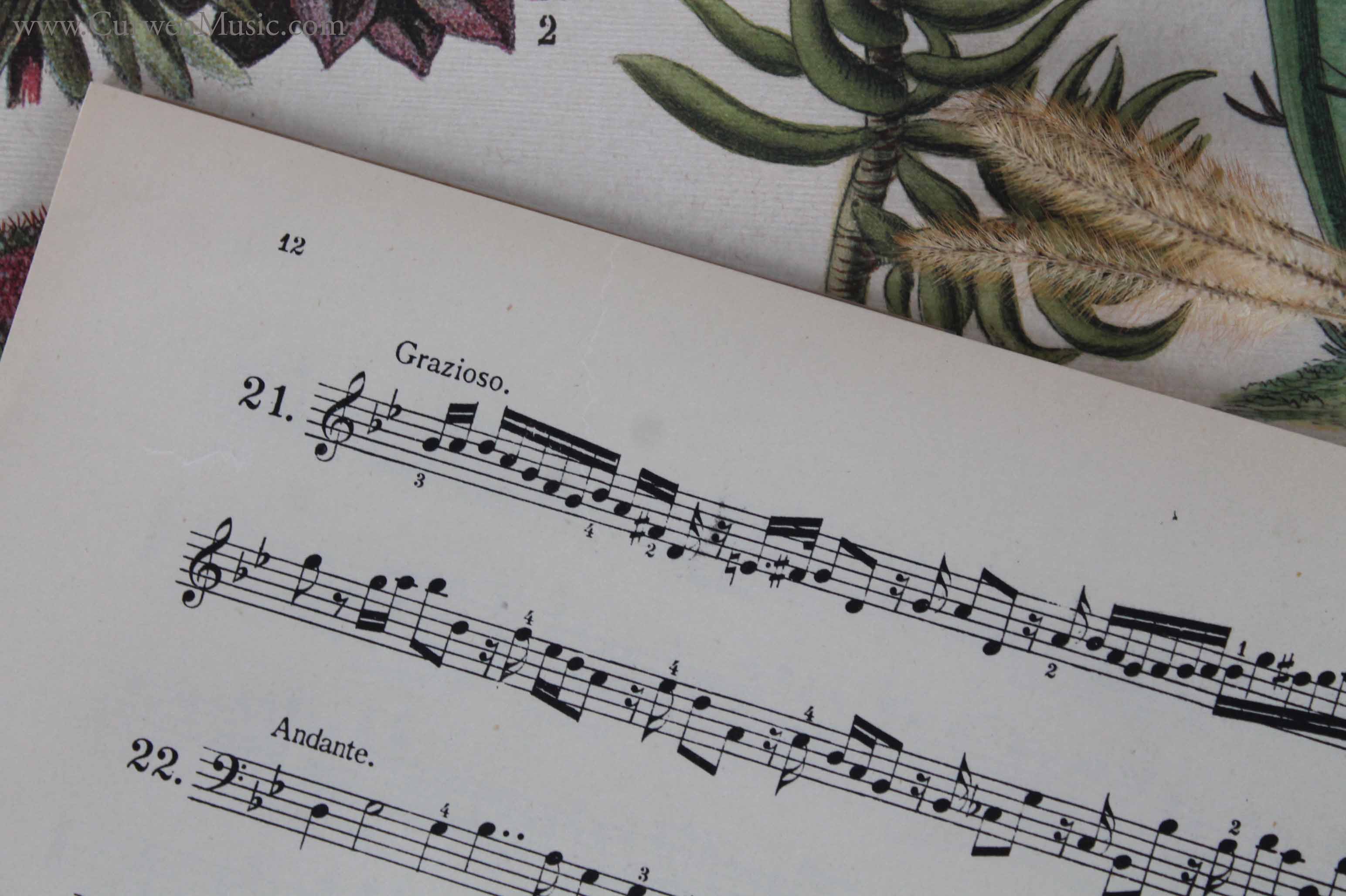Home>Genres>Jazz>What Was The Next Style Of Music After Jazz?


Jazz
What Was The Next Style Of Music After Jazz?
Modified: February 24, 2024
Discover the evolution of music from jazz to the next groundbreaking style. Explore the vibrant sounds and influential artists of this musical era.
(Many of the links in this article redirect to a specific reviewed product. Your purchase of these products through affiliate links helps to generate commission for AudioLover.com, at no extra cost. Learn more)
Table of Contents
Introduction
Jazz is a genre of music that has captivated audiences for decades with its improvisation, syncopation, and expressive nature. From its roots in African and African-American communities, jazz has evolved and branched out into various styles, influencing and being influenced by other genres along the way.
However, every era of music experiences change, and jazz was no exception. As the years went by, new styles began to emerge, each bringing something unique to the table while building upon the foundations laid by jazz. In this article, we will explore the musical landscape that followed the peak of jazz and delve into the next styles of music that emerged.
From the late 1940s onward, jazz began to face challenges as the dominant genre in the music industry. The rise of rock and roll and the changing tastes of the mainstream audience meant that jazz had to adapt and find new ways to connect with listeners.
In the next sections, we will take a journey through the various styles of music that developed after jazz, including Bebop, Cool Jazz, Hard Bop, Free Jazz, Fusion, and more. Each style brought its own distinct characteristics and pushed the boundaries of what jazz could be.
Join us as we explore the innovative sounds and evolution of jazz music, discovering how it continued to shape the musical landscape long after its heyday.
The Decline of Jazz as the Dominant Genre
During the 1940s, jazz was at the height of its popularity, with big band swing ruling the airwaves and dance halls. However, as the 1950s approached, the music industry started to shift, and jazz began to face challenges in maintaining its dominance.
One of the main reasons for the decline of jazz as the dominant genre was the emergence of rock and roll. The energetic and rebellious nature of rock captivated the younger audience, diverting their attention away from jazz. This shift was amplified by the rise of television and the accessibility of rock and roll performances on popular shows like American Bandstand, which made it easier for artists to reach a wider audience.
Furthermore, the tastes of the mainstream audience were changing. Jazz, with its complex melodies and improvisation, was seen as daunting and inaccessible to many listeners who were now gravitating towards music with simpler structures and catchy hooks. The commercial success of artists like Elvis Presley and Bill Haley and His Comets further widened the gap between jazz and popular music.
The decline of jazz as the dominant genre led to a fragmentation within the jazz community. Musicians and composers began to experiment with new sounds and styles in an attempt to stay relevant and connect with their audience.
However, despite facing these challenges, jazz continued to evolve and adapt, giving birth to new styles that would shape the future of music. These new styles embraced elements of jazz while incorporating influences from other genres, resulting in a fusion of sounds that would pave the way for the next generation of music.
Join us as we journey through the different styles that emerged in the wake of jazz’s decline, exploring how each one brought its own unique flavor to the music scene.
The Birth of Bebop
As the decline of jazz as the dominant genre unfolded, a new movement called bebop emerged in the 1940s. Bebop was a response to the commercialization of jazz and a desire among musicians to return to the roots of the music, prioritizing improvisation and musical complexity over accessibility.
Bebop was characterized by fast tempos, intricate melodies, and complex harmonies. Influential musicians such as Charlie Parker, Dizzy Gillespie, and Thelonious Monk were at the forefront of this movement, pushing the boundaries of jazz and inspiring a new generation of musicians.
Unlike the smoother and more danceable sounds of swing, bebop was meant for active listening rather than social dancing. Its intricate melodies and rapid-fire improvisations demanded close attention from both the musicians and the audience.
Another notable aspect of bebop was the smaller ensembles it employed, moving away from the large big bands of the swing era. The smaller group size allowed for greater freedom and interaction between the musicians, leading to more intimate and spontaneous performances.
Bebop brought a new level of virtuosity to jazz, with musicians displaying incredible technical skill and a deep understanding of complex harmonic structures. Improvisation became a key element, with musicians engaging in intricate and innovative solos, often based on chord progressions.
While bebop initially faced resistance from both the music industry and some fans, it laid the foundation for the future development of jazz. Its influence can be seen in subsequent genres such as cool jazz, hard bop, and even the avant-garde movements of the 1960s.
Join us as we delve deeper into the bebop movement and explore how its innovative approach to jazz paved the way for the evolution of the genre.
Cool Jazz and West Coast Jazz
While bebop was making waves on the East Coast, a parallel movement called cool jazz was emerging on the West Coast of the United States. Cool jazz sought to bring a more relaxed and introspective sound to jazz, contrasting the energetic and frenetic nature of bebop.
Cool jazz was characterized by its emphasis on smooth melodies, subtle dynamics, and a more laid-back approach to improvisation. Musicians such as Miles Davis, Chet Baker, and Gerry Mulligan were key figures in this movement, with their mellow tones and delicate phrasing defining the cool jazz aesthetic.
In contrast to the improvisational virtuosity of bebop, cool jazz focused on carefully crafted arrangements and melodic exploration. The use of slower tempos, lighter textures, and a greater emphasis on harmonic complexity helped to create a more relaxed and introspective mood.
While cool jazz encompassed a variety of styles and approaches, it was particularly embraced by the West Coast jazz scene. West Coast jazz put a distinct spin on cool jazz, influenced by the more laid-back lifestyle of California and the influence of classical music.
West Coast jazz often featured smaller ensembles and a greater emphasis on orchestration. Some of the notable figures in West Coast jazz include Dave Brubeck, Stan Getz, and Paul Desmond, who further contributed to the development of the cool jazz sound.
Cool jazz and West Coast jazz proved to be influential in shaping the direction of jazz in the following years. Their embrace of harmonic complexity, subtle phrasing, and a more contemplative approach to improvisation laid the groundwork for future styles such as modal jazz and the fusion movement of the 1960s.
Join us as we explore further the cool jazz and West Coast jazz movements, and how they contributed to the evolving landscape of jazz music.
Hard Bop and Soul Jazz
In the 1950s and 1960s, as jazz continued to evolve, two significant styles emerged: hard bop and soul jazz. These styles represented a shift towards a more soulful and socially conscious approach to jazz, incorporating elements of blues, gospel, and R&B.
Hard bop was a reaction to the cool jazz movement, incorporating a more intense and aggressive sound. It retained the improvisational spirit of bebop but infused it with a heavier emphasis on blues and gospel influences. Hard bop was characterized by its energetic tempos, powerful rhythms, and bold improvisations.
Pioneering musicians such as Art Blakey, Horace Silver, and Cannonball Adderley were key figures in the development of hard bop. Their music reflected the realities and experiences of African-American communities, providing a platform for social and political expression.
Soul jazz, as the name suggests, blended the soulful sounds of rhythm and blues with the improvisational elements of jazz. It retained the groove and feel of R&B while incorporating jazz harmonies and improvisation. Soul jazz often featured a strong backbeat, infectious rhythms, and catchy melodies that appealed to a wide audience.
Artists like Jimmy Smith, Grant Green, and Stanley Turrentine were prominent figures in the soul jazz movement. Their music captured the spirit and energy of soul music while showcasing their instrumental prowess and improvisational skills.
Both hard bop and soul jazz offered a raw and soulful experience, appealing to a broader audience beyond the jazz enthusiasts. They brought a new level of accessibility to jazz while maintaining its core improvisational and expressive nature.
Hard bop and soul jazz influenced subsequent genres, such as funk and fusion, and their impact can still be felt in contemporary jazz music. The incorporation of soulful and socially conscious elements in these styles paved the way for jazz to become a voice for cultural expression and social commentary.
Join us as we delve deeper into the worlds of hard bop and soul jazz, uncovering the unique sounds and influences that defined these influential styles.
Free Jazz and Avant-Garde Jazz
In the 1960s, jazz experienced a radical departure from traditional structures with the emergence of free jazz and avant-garde jazz. These styles pushed the boundaries of improvisation, composition, and experimentation, challenging the established conventions of jazz.
Free jazz, as the name implies, liberated musicians from the constraints of traditional song structures and chord progressions. It emphasized collective improvisation and spontaneous interaction among performers. Musicians such as Ornette Coleman, John Coltrane, and Albert Ayler were at the forefront of this movement, exploring new sonic possibilities and embracing a sense of artistic freedom.
Free jazz often featured unconventional and unorthodox techniques, including extended techniques on instruments, unconventional use of rhythm and melody, and a disregard for traditional harmonic structures. It was characterized by a sense of energy, intensity, and raw emotion, with musicians expressing themselves freely and without inhibition.
Avant-garde jazz, on the other hand, encompassed a broader range of experimental styles that pushed the boundaries of jazz even further. It incorporated elements of free jazz but also incorporated influences from classical music, world music, and even elements of noise and electronic music.
Artists such as Sun Ra, Cecil Taylor, and Anthony Braxton were pioneers of avant-garde jazz, creating music that challenged listeners with its abstract and unconventional approach. They embraced dissonance, complex rhythmic patterns, and non-traditional instrumentation to create avant-garde compositions that defied categorization.
Free jazz and avant-garde jazz provided a platform for musicians to explore their creativity and express their innovative ideas. These styles inspired new approaches to improvisation, composition, and sound exploration, influencing subsequent genres such as fusion and experimental music.
While free jazz and avant-garde jazz were met with mixed reactions from audiences and critics at the time, they were significant in pushing the boundaries of what jazz could be. They opened the doors to new sonic landscapes and challenged the notion of what constituted jazz music.
Join us as we delve deeper into the realms of free jazz and avant-garde jazz, exploring the groundbreaking artists and their contributions to the evolution of jazz.
Fusion and Jazz-Rock
In the late 1960s and 1970s, a new style emerged that brought together the improvisational nature of jazz with the energy and instrumentation of rock music. This genre, known as fusion or jazz-rock, combined elements of jazz, funk, rock, and even electronic music, creating a fusion of styles that appealed to a wide audience.
Fusion expanded the possibilities of jazz by incorporating electric instruments, synthesizers, and rock-inspired rhythms. Pioneering musicians such as Miles Davis, Herbie Hancock, and Weather Report embraced this new direction, fusing together diverse musical influences to create a fresh and innovative sound.
One of the defining features of fusion music was the integration of complex rhythmic patterns and grooves. Musicians explored new ways of incorporating funk and rock rhythms, resulting in infectious and danceable beats that were accompanied by intricate harmonies and improvisations.
Fusion also allowed for a greater integration of electronic instruments and effects, giving rise to experimental sounds and textures. Musicians embraced synthesizers, electric guitars, and drum machines, expanding the sonic palette of jazz and blurring the boundaries between genres.
Jazz-rock, as a subset of fusion, focused more on the rock elements of the fusion sound. Bands like The Mahavishnu Orchestra, Return to Forever, and Steely Dan incorporated elements of rock, blues, and even elements of progressive rock, creating a dynamic and guitar-driven sound.
The fusion and jazz-rock movement brought jazz music to a wider audience, appealing to both jazz enthusiasts and fans of rock and funk. It became a bridge between different musical communities and fostered collaborations between musicians from different genres.
While fusion and jazz-rock were criticized by some purists for departing from traditional jazz conventions, they opened new avenues for experimentation and innovation. Their impact can still be felt in contemporary jazz and popular music, with fusion elements continuing to influence a wide range of genres.
Join us as we explore the fusion and jazz-rock movement, uncovering the dynamic sounds and creative forces that shaped this unique and influential genre.
Conclusion
Jazz, with its rich history and diverse influences, has continuously evolved and adapted to the changing musical landscape. From its golden era as the dominant genre to its subsequent decline, jazz found new life in a variety of styles that emerged in its wake.
Starting with the birth of bebop, jazz musicians sought to break free from traditional structures and push the boundaries of improvisation. Cool jazz and West Coast jazz brought a more relaxed and introspective sound, while hard bop and soul jazz added soulful elements and social commentary to the mix.
In the 1960s, free jazz and avant-garde jazz challenged conventions and embraced experimentation, paving the way for a new wave of artistic expression. This was followed by the fusion and jazz-rock movement, which fused jazz with rock, funk, and electronic influences, creating a genre that captivated a broad audience.
Throughout its journey, jazz never lost its essence of improvisation, innovation, and cultural expression. Each style that emerged after jazz contributed its own unique flavor to the ever-evolving jazz scene, pushing boundaries and inspiring future generations of musicians.
As we reflect on the various styles that followed jazz’s peak, it becomes clear that the evolution of jazz is a testament to the resilience and adaptability of the genre. Jazz continues to thrive, incorporating elements from different styles and cultures, remaining a vibrant and dynamic form of music.
So whether you find yourself drawn to the energetic improvisations of bebop, the cool allure of cool jazz, or the fusion of jazz and rock, there is a wealth of musical exploration awaiting you within the vast world of jazz. The next time you immerse yourself in the sounds of jazz, remember its rich history and the journey it has taken to become the diverse and captivating genre that it is today.
Join us as we celebrate the legacy of jazz and continue to embrace its ever-evolving future.











